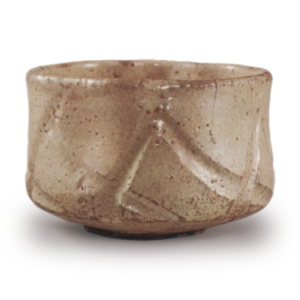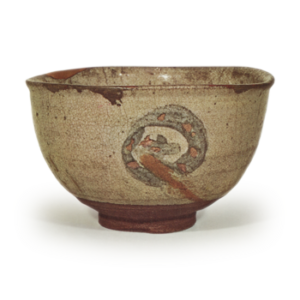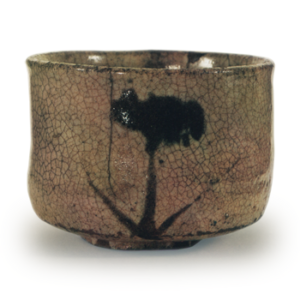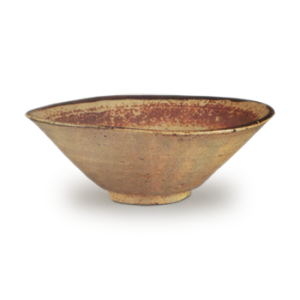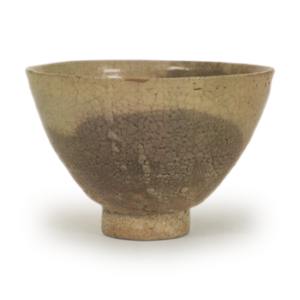A kiln for firing roof tiles. It consists of four parts: the firing section where raw tiles are laid out, the burning section where wood is burned, the opening section, and the smoke outlet section.
The basic types of tile kilns used in ancient Japan were cellar kilns and flat kilns, both of which fired tiles using reducing fire. The firing temperature is estimated to be between 1,000 and 1,300 degrees Celsius, and deciduous trees such as wood, pine, and oak were often used as fuel. A cellar kiln is a tunnel about 1.5 meters wide, about 1 meter high, and 7 to 10 meters long, built underground on a hillside, with a narrow opening at the lower end and a smoke outlet at the upper end. Most of them have a slope of around 20 to 35 degrees. These were once generally called climbing kilns. There are attempts to further classify them into several types according to the characteristics of each part.
The Asukadera Tile Kiln in Asuka Village, Takaichi County, Nara Prefecture, is a well-known example of a kiln in which the floor of the firing section is made in a stepped form by hollowing out the bedrock. Some kilns do not have a stepped floor in the firing area. A flat kiln is a rectangular kiln with a width of about 2 meters and a depth of 1.5 meters or less, excavated into the slope of a hillside to create a rectangular firing chamber, with the combustion chamber located one step lower on the outside. In order to distribute the fire throughout the firing chamber, many of them are equipped with several parallel planks on the floor of the firing chamber. Some tile kilns, such as the one in Utahime-cho, Nara City, have a perimeter wall made of flat tiles stacked on top of each other, while others have a wall made of flat tiles only in the burning area. At the Kurisuno Tile Kiln in Iwakura Hatae-cho, Sakyo-ku, Kyoto, two flat tiles were left in pairs, concave side together and straddling a cleat.
The number of tiles that could be fired at one time was estimated to be 300, assuming that they were arranged in two tiers in the same way, but the Engishiki (Engi Shiki), Mokkoryo Shiki, states that the number was 1,000, which is too large a difference. Although ancient documents indicate that a workshop for tile molding was attached to the tile kiln, such a structure has not yet been studied extensively. Since Japanese tiles themselves are of Chinese origin, the structure of the tile kilns must also be of Chinese origin, but the actual nature of the Chinese tile kilns modeled after those of the Japanese is unknown. In Song Ou Xing’s Tian Kou Kaibutsu, published in the 17th century, there is a description of tile production methods. Although it describes techniques practiced during the Ming dynasty, the recorded content is thought to be a good description of techniques from past eras. In the section on tile firing, it says, “When the base material is ready, it is dried and then stacked in a kiln and fired by burning wood. The fire is then turned off for one or two days or nights, depending on the quantity of tiles to be fired, and water is poured into the kiln and the tiles are rolled. The illustration describes the process as the same as the method of making bricks, with one person putting wood in the mouth of one part of the hemispherical kiln and another person pouring water into the top. The water is said to penetrate through the kiln and feel the fire and produce high-quality roof tiles when the heat and amount of water are appropriate. The oldest tile kiln in Japan, Asukadera Temple, is very similar to the one at the foot of Geumseong Mountain in Buyeo Dongnam-ri, Chungcheongnam-do, where the capital of Baekje was located, and the patterns on the eaves round tiles used to roof Asukadera Temple are also in the exact same family as those found at the Baekje temple site. This corresponds to an article in the first year of the reign of Emperor Sohshun in the Nihon Shoki (Chronicles of Japan), which states that a kawara doctor from Baekje came to Japan to help build Hokoji Temple (Asuka Temple). And this Baekje Zo-Anasa tile technology is said to have come from Liang in the Southern Dynasty of China. The tile kilns that came from China via Baekje were eventually used in Japan for firing Sue ware. They have been identified at the remains of a kiln and other sites in Iwakura-hatae-cho, Sakyo-ku, Kyoto City. The introduction of the new technology of tile making mobilized Sue ware makers. One hundred years after the introduction of the cave kiln, a new form, the heirayama, was established for the construction of the Fujiwara Palace. The flat kiln had a unique ladle-shaped plan, with the surrounding walls built of clay and coated with clay, three smoke vents on the back wall, and an almost flat floor. The eaves round tiles fired in this tile kiln have a Tang dynasty design, and Kazuo Fujisawa speculates that this flat kiln style also has its origins in the Tang dynasty tile kilns. Since tiles were used for the first time in palace construction, which required more than one million tiles, not only the technology of tile firing but also the official system was learned from the Tang Dynasty. The organization of the official tile kilns established at this time continued until the 11th century, and from the 8th century onward, the Heijo kilns became the mainstream in the Kinai region. There are about 50 known kan-gawara kilns for the Heijo Palace in the Nara hills, another 50 for the Nagaoka Palace in Kajiwara, Takatsuki City, Osaka Prefecture, and two for the Heian Palace in Kurisuno and Ono, which are mentioned in the Engishiki (Engi Shiki). Temples originally built their own tile kilns at the time of their construction, and later, even ordinary temples were supplied with tiles from these kilns by official temples built in the capital from the end of the Nara Period to the beginning of the Heian Period. (Kazuo Fujisawa, “Zoukawara Gijutsu no Kaihatsu” [The Development of Tile Making Technology],” in Japanese Archaeology Historical Period, translated by Kiyoshi Kamiyabuuchi, Tenkou Kaihatsu.
